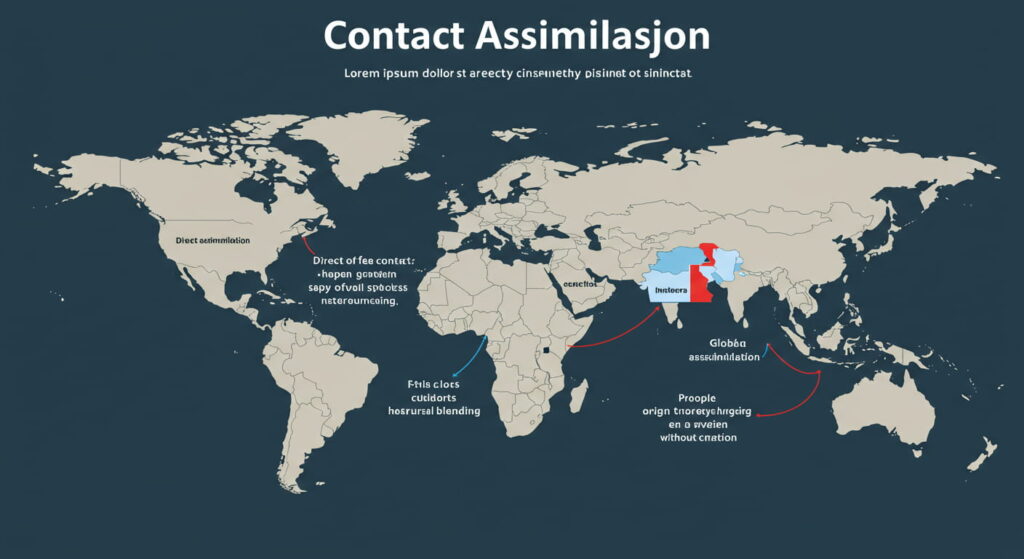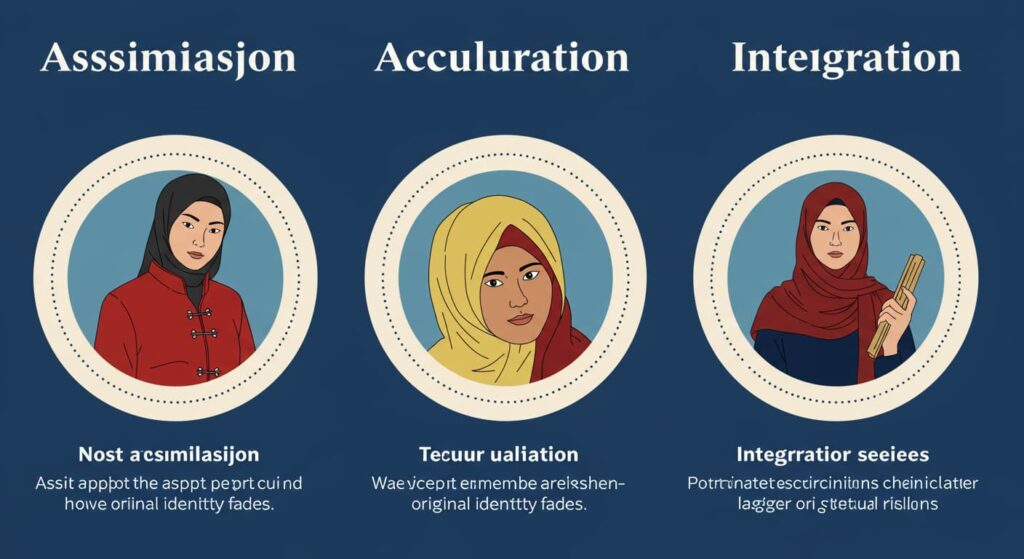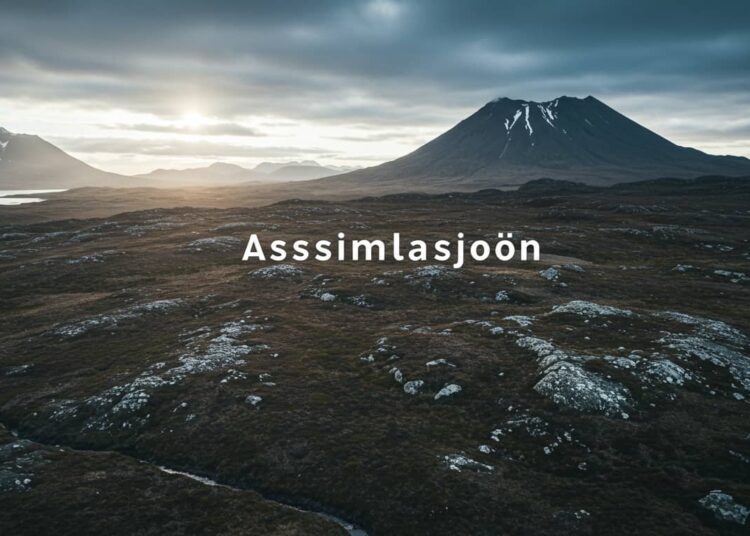Language and culture are not static; they evolve through contact, exchange, and adaptation. One of the strongest yet often unnoticed forces behind this evolution is assimilasjon — a process that changes how people speak, think, and interact within societies. Assimilasjon can unify communities, but it can also lead to the fading of unique cultural identities. Understanding this phenomenon helps us see how human societies grow closer while sometimes losing their differences.
What is Assimilasjon

The word assimilasjon originates from the Latin assimilare, meaning “to make similar.” It refers to the process through which individuals or groups gradually adopt the language, culture, and behaviors of another group, usually the dominant one. In linguistic terms, assimilation also describes a phonetic change where one sound becomes more like a neighboring sound.
Socially, assimilasjon is the blending of cultural traits — food, clothing, customs, and speech — so that differences between groups become less distinct. It often occurs naturally as people migrate, intermarry, or adapt to new environments. Yet it can also be encouraged by social or political systems aiming to create uniformity within a nation.
Historical Background of Assimilasjon
Assimilasjon has deep roots in human history. Ancient empires such as the Roman, Persian, and Chinese dynasties practiced cultural assimilation to unite their diverse populations. Conquered territories were often taught the language and customs of the ruling power to maintain control and cohesion.
During the colonial era, European powers promoted assimilation policies in their colonies. Indigenous peoples were expected to adopt the language, religion, and norms of the colonizers, often at the expense of their native traditions. Schools became instruments of cultural transformation — sometimes with the belief that it was for the “civilizing” of local populations.
In modern times, assimilation remains a key theme in migration and identity politics. Immigrants to the United States or Europe often face subtle pressure to “fit in” by changing accents, clothing, or even names to align with the dominant culture. This historical background shows that assimilasjon has always been both a tool of unity and a source of cultural loss.
Causes and Factors Influencing Assimilasjon
Assimilasjon does not happen overnight; it is influenced by a mix of social, political, and linguistic factors.
Social Factors
Human beings naturally seek belonging. When people move into new communities, they adopt local habits to gain acceptance. Shared language, dress, and manners help build trust and social networks. Urbanization also plays a role — cities bring diverse groups together, encouraging a common lifestyle.
As humans are social creatures, the desire to “fit in” drives much of the process of assimilasjon. When newcomers settle in a new region, they often observe and imitate local behaviors to avoid isolation. This can include learning local slang, following social etiquette, or adopting popular fashion trends. Over time, these small changes build a bridge between outsiders and the host community, making daily interactions smoother and more comfortable.
Also read: Kashubka Annet
Political Factors
Governments sometimes promote assimilation through national education systems, citizenship tests, or language policies. For example, many countries require immigrants to learn the national language to access jobs or social services. In some cases, however, such policies can suppress minority cultures in the name of unity.
In many Western nations, assimilation is often framed as a path to social harmony and equality. National curriculums emphasize shared values, civic duties, and the use of one official language to foster a collective identity. For instance, in France, language policies strongly promote the exclusive use of French in schools and public institutions, discouraging the use of regional dialects or immigrant languages. Similarly, in the United States, “English-only” education movements have often pushed immigrant families to abandon bilingual education, believing it will help children integrate faster.
Linguistic Factors
Language is the most visible and powerful form of assimilasjon. It serves not only as a communication tool but also as a symbol of identity and belonging. Through daily interaction, people gradually adopt new pronunciation patterns, vocabulary, and grammar that align with the dominant language. This change often starts unconsciously — a modified accent here, a borrowed phrase there — but over time it reshapes the way individuals express themselves.
For immigrants and minority groups, linguistic assimilation is often seen as a key to social and economic advancement. Mastering the dominant language helps individuals access better jobs, education, and community participation. Parents, hoping for their children’s success, may encourage them to speak the national language at home, even if it means letting go of their native tongue. As a result, the next generation may understand their ancestral language but struggle to speak it fluently.
Types of Contact Assimilasjon

Contact assimilation occurs when groups interact directly or indirectly.
Direct assimilation happens through face-to-face contact — such as when immigrants work, study, or marry within the host community. This close interaction speeds up cultural blending.
Indirect assimilation occurs through exposure to media, technology, or institutions. For example, people in remote areas might adopt foreign phrases, clothing styles, or values through movies, social media, and education even without direct contact.
Both types show how global communication and mobility make assimilation an everyday phenomenon in the modern world.
Remote Assimilation in Language
In linguistics, remote assimilation describes changes in sounds that are not immediately next to each other but still influence one another. For instance, in English, the word “input” is often pronounced “imput,” where n becomes m due to the following p sound — a sign of phonetic assimilation.
Similarly, in many languages, vowel and consonant harmony show how sounds shift to maintain ease of pronunciation. These small linguistic adjustments, repeated across speech communities, reflect the human tendency to adapt and simplify — a mirror of cultural assimilation on a smaller scale.
Assimilasjon in Education and Language Learning
Education is a major driver of assimilasjon. Schools often promote a national language and shared values to create social cohesion. For immigrants, learning the host country’s language is usually the first step toward integration.
Language learning, however, is not only about communication. It also shapes identity and worldview. Students immersed in a dominant culture may begin to think, dream, and express emotions in their new language, gradually shifting away from their heritage tongue.
This form of assimilation can open doors to economic and social mobility, but it may also create emotional distance from one’s roots. Balancing both languages and cultures becomes an essential challenge for bilingual learners.
Also read:Muzozone.me
Psychological Aspects of Assimilasjon
Assimilasjon affects not just behavior but also psychological identity. People undergoing assimilation often experience inner conflict — torn between preserving their heritage and adapting to a new cultural environment.
This dual identity can lead to what psychologists call acculturative stress, a feeling of loss, confusion, or even guilt. At the same time, successful assimilation can foster a sense of belonging, confidence, and acceptance.
The psychological side of assimilation depends largely on how open the host society is. Inclusive societies allow newcomers to adapt without abandoning their uniqueness, while rigid ones may force conformity at the cost of emotional well-being.
Assimilasjon vs. Multiculturalism
While assimilasjon aims for cultural similarity, multiculturalism celebrates diversity. Under assimilation, newcomers adapt to the dominant culture; under multiculturalism, different cultures coexist while maintaining their distinct identities.
For example, a multicultural society like Canada encourages immigrants to preserve their languages and traditions alongside national values. In contrast, assimilation-focused societies expect newcomers to blend fully into mainstream norms.
The challenge lies in finding a middle ground — where shared values exist without erasing individual cultures.
Assimilasjon vs. Acculturation vs. Integration
These three concepts are closely related but have distinct meanings:

- Assimilasjon means adopting the dominant culture to the point where one’s original identity fades.
- Acculturation involves borrowing elements from another culture while keeping one’s own.
- Integration seeks a balance, where newcomers participate in the larger society without losing their cultural roots.
In practice, most modern societies encourage integration rather than complete assimilation, as it promotes harmony without cultural erasure.
Criticism and Challenges of Assimilasjon
Assimilasjon is not without controversy. Critics argue that it often leads to cultural homogenization — a loss of linguistic, artistic, and ethnic diversity. Indigenous groups around the world have suffered when forced assimilation erased their languages and traditions.
Another challenge is power imbalance: assimilation usually benefits the dominant group while minorities lose their identity. It can also create generational divides, as younger members adapt faster while elders struggle to keep traditions alive.
In today’s globalized world, the biggest challenge is preserving identity while embracing change — a delicate balance that societies continue to negotiate.
Positive Effects of Assimilasjon
Despite the criticism, assimilasjon can also have positive effects when approached inclusively. It helps reduce social barriers, enabling smoother communication and cooperation across cultural lines.
In workplaces, shared language and values promote efficiency and unity. In communities, assimilation fosters trust and social harmony. It also opens opportunities for migrants and minority groups to participate fully in national life.
When mutual respect guides the process, assimilation becomes a bridge rather than a wall between cultures.
Examples of Assimilasjon in Daily Life
Assimilasjon appears in many small ways in everyday living:
- Language use: Immigrants start using the dominant language at home or in public.
- Food habits: Traditional dishes evolve to include local ingredients.
- Fashion: People adopt local clothing styles to blend in.
- Names: Some change their names for easier pronunciation or acceptance.
- Social norms: Greetings, gestures, and manners adapt to local customs.
Even technology plays a role — global apps, memes, and online trends spread cultural behaviors rapidly, creating a new digital form of assimilation.
Also read: Trendywinner com
Future of Assimilasjon in a Globalized World
Globalization, migration, and digital communication are transforming assimilasjon. The internet connects people from every culture, blurring boundaries and redefining identity. Instead of one-way assimilation, modern societies now experience mutual influence, where cultures mix and reshape one another.
For example, Western slang enters Asian languages, while Eastern pop culture influences Western media. Hybrid identities — where people feel equally connected to multiple cultures — are becoming the new norm.
However, digital globalization also raises questions: will global culture eventually erase local traditions, or can we build a world where diversity thrives within unity? The future of assimilasjon depends on how societies answer this question.
FAQs About Assimilasjon
1. What does assimilasjon mean?
Assimilasjon means the process of adapting to or adopting another group’s language, culture, or customs.
2. What is an example of assimilasjon in language?
When one sound changes to resemble another nearby sound, like “input” pronounced as “imput,” it shows linguistic assimilation.
3. How does assimilasjon affect culture?
It blends different cultural traits, creating unity but sometimes reducing diversity.
4. What causes assimilasjon to happen?
Migration, education, media, and social interaction are major causes of assimilasjon.
5. What is the difference between assimilasjon and multiculturalism?
Assimilasjon seeks similarity, while multiculturalism values diversity and coexistence.
6. Can assimilasjon be positive?
Yes, when voluntary, it promotes communication, inclusion, and social harmony.
7. What are the dangers of forced assimilasjon?
Forced assimilasjon can erase languages, traditions, and ethnic identities.
8. How is assimilasjon different from acculturation?
Acculturation allows people to keep their original culture, while assimilasjon replaces it over time.
9. Does globalization increase assimilasjon?
Yes, global media and technology spread cultural habits worldwide, speeding up assimilation.
10. How can societies balance assimilation and identity?
By promoting inclusion while respecting cultural roots and heritage.
Conclusion:
Assimilasjon is a complex and powerful process that shapes how languages evolve, how communities interact, and how individuals define themselves. It has been both a tool of progress and a cause of loss. While it can promote unity and communication, it also risks erasing valuable cultural heritage.
The goal, therefore, is not to resist change but to balance adaptation with preservation. True harmony lies in embracing shared values while respecting unique identities. In an increasingly interconnected world, understanding assimilasjon helps us navigate the fine line between belonging and being ourselves — the essence of what it means to live in a global community.
Related post:
















